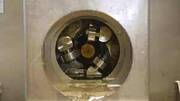Upgrade & Secure Your Future with DevOps, SRE, DevSecOps, MLOps!
We spend hours on Instagram and YouTube and waste money on coffee and fast food, but won’t spend 30 minutes a day learning skills to boost our careers.
Master in DevOps, SRE, DevSecOps & MLOps!
Learn from Guru Rajesh Kumar and double your salary in just one year.
Source:-https://www.sme.org
Long gone are the days where the only solution to human error was human correction. As engineers today, we have access to smart technology that no other generation could have ever imagined.
When configured and applied correctly, we have at our fingertips the capability to use artificial intelligence (AI) and robotic techniques, integrated with multiple inspection systems, to create flawless products at an efficient rate.
Multiple inspection systems fitted with AI and robotic technology must be applied to factories because having several inspection systems allows for quality production and, by using inspection data, achieves smarter manufacturing processes in the future.
Several inspection systems allow for the collection of a sufficient amount of data from various sources to enable a 99.99 percent certitude level of inspection data.
Inspection and rework are often the most costly bottleneck for any production system.
So, by having such an innovative system, we would increase throughput and reduce downtime considerably.
The multiple inspection systems consist of robotic arms augmented by sensors tracking slippage, temperature and vision, in addition to the regular robotic data metrics.
Manufacturers can also include a drone equipped with vision peripherals that has a multi-tracking camera system with both regular and heat mapping.
These three types of inspection result in an integrated, smart inspection system that can analyze manufacturing events, similar to how self-driving cars analyze road conditions, in order to inform the manufacturing system of needed responses to ensure unimpaired and nonstop production.
The data collected through these inspections is then fused, using knowledge-based/semantic AI techniques to flag anomalies, propose potential correction scenarios and retrieve from the archive of previously acquired data correction schemes.
The data is then also used to augment the learning database to support future correction scenarios.
One can imagine that, based on given sensed metrics, the drones can be dynamically commanded to perform certain inspection routines.
The convergence of robotics/drones and AI/machine learning is the key to success—using innovative systems to increase productivity and reduce cost.
This concept of multiple inspection systems has been applied and implemented in a Future Factories laboratory at the University of South Carolina.
The lab simulates an environment of a future manufacturing industry. The system is used to mimic automated assembly of rocket parts (representative of how we would build rockets in the next century).
It is equipped with a plethora of sensors integrated with algorithms to instantly present the manufacturing system with scenarios to overcome current faults.
Such an integrated inspection system can be used to facilitate production in both discrete and continuous manufacturing environments.
We are currently assessing the implementation of this system in automotive and pharmaceutical manufacturing.
The current experiments conducted in the laboratory edges us toward a more comprehensive inspection system that is seamlessly integrated with artificial intelligence techniques to anticipate, measure, assess and control production systems.

 Starting: 1st of Every Month
Starting: 1st of Every Month  +91 8409492687 |
+91 8409492687 |  Contact@DevOpsSchool.com
Contact@DevOpsSchool.com